The Cornell Lab Bird Academy › Discussion Groups › Nature Journaling and Field Sketching › Jump Right in!
-
I have to say I felt a little intimidated looking at the photo. But after sketching and using the water colors, I felt a lot more confident. I will be focusing on getting more detail out of the paint, I feel this is most challenging. I didn't spend a whole lot of time studying the photo, I seemed to have focused mostly on the Warbler.

-
I think you did a really good job with the overall shape of the bird and the colours. I love the way you captured the dark black of the eye (with the little white dot of reflection) and the black in the wings and the tail. The notes regarding the color or other characteristics is a good idea, especially in the field, when the bird may fly away before you get to finish the painting.
-
@Nancy Thank you Nancy, This was the first time I used watercolor paints. I always thought of myself as Not a painter, I always used pencils, felts in the past when making pictures.
-
-
1. The drawing itself was not that difficult for me. I draw birds since my early childhood... But the most difficult thing is to put watercolor on my drawing. My medium is acrylic or more than watercolor. I try to use a yellow wash above olive-green back of the bird (on the greater, medium, and lesser covers). The eye is not exactly round because the head is a little bit turned. I always try to paint some little point around the (= eyering) around the eye! I directly saw from where the light is coming on the photo and put shade under the right-wing and not far from the tail. Drawing from a photo is easy because I can always look precisely at it and see what is correct or wrong. I only concentrate on trying to represent the bird the best I can. I know how to paint a branch and increase it's roundness take into account the shade and light! 2. If I had to paint that bird for nature journaling, I think I might to try to draw the bird faster and put only a little bit of color (with water colored pencils more than watercolor). I probaly will add some details of the lichen and leaves...
-

-

-
Hi Géry, what are the type of colours used in your drawing? btw, i liked the lynx as well :)
-
-
1. Some of the proportions were difficult among the various objects. 2. When drawing, I noticed more detail in the branch and what was on it besides the warbler.
-
I was asked to write an article for an employer's social media post, and I decided to focus on sketching (though I don't mention the sketching part until the end.) Some novice sketchers might appreciate my struggle! https://operaflute.blogspot.com/2020/05/a-stay-at-home-order-sketches-on-dining.html
-
I was afraid to tackle the watercolors, but that probably would have been a better option than the pencils.

-
It was more difficult than I thought it would be to capture the posture of the little bird and I was a bit confused as to what details to add. I am really enjoying working with the watercolor pen but it will take a while to master. Right now I'm overworking the color and want to try experimenting with some other techniques.

-
I enjoyed the fact that the Yellow Warbler wasn't moving! I needed to look at the details over-and-over and revise-revise-revise the sketch when something didn't look right (e.g., eye placement). I was fortunate to have several living (YEWAs) encouraging me along outside my cabin as I worked. I hear them all the time but getting a look is a challenge. I wonder if I will every be able to draw from a glimpse... Feather placement on the wings would have been extremely difficult without the photo. I could have spent hours trying to get them right but this was a supposed to be sketch. Compared to photography, I really liked to be able to annotate my drawing. John

-
It's surprising how much fear arose every step of the way on this drawing, the first mark, erasure, adding color, adding ink. I think that's why I've put off starting the course. I keep saying I'm to busy, but that's probably just masking the fear. (The supremely organized sock drawer isn't terribly fulfilling.) And I learned so much just by staying with this image for a few days, the parts of the wing, the loose grip of one claw. The yellow warbler is olive and amber and black!
-

-

-
This is the 2nd time I am taking this class - thought it was a great idea to try everything again. It is alot easier to draw from a photo, much easier to take the time to see the shape and colors of the bird. I do like drawing from nature, though. It is nice to be outside and there is something organic about drawing on the fly. My yellow warbler drawing did not turn out as nice as the 2d time I drew it from taking the course the first time. Oh well, some days I am better than others at drawing.

-
 This was a fun exercise.....and I took my time to try to capture proportion and some detail. It will be fun to compare at the end of the course. The photo was beautiful to work from, plus you have the luxury of time. Drawing live in nature will definitely be more of a challenge (:
This was a fun exercise.....and I took my time to try to capture proportion and some detail. It will be fun to compare at the end of the course. The photo was beautiful to work from, plus you have the luxury of time. Drawing live in nature will definitely be more of a challenge (: -
It is difficult to decide when to stop! Should I keep adding details or call it quits? It begins to look overworked, the longer I keep painting. I think/hope painting directly from nature will allow me to capture more of the personality, or movement will make it more interesting. Comparing my work to the photograph is defeating. This first attempt did not achieve results I had hoped for. My warbler does not look alive.

-
Oh, Karen, please don't feel defeated! You have so much going on in your drawing and painting.The colors, the proportions, the crooks and curves of the leaves and branches, and curves in his feet make it all look alive! And , remember, this is what you are to compare your last drawing of him to at the end of the course! Enjoy!!!
-
Hi Karen. Yes, like Cynthia said, please do not get discouraged or defeated. Know when to stop is hard, but I am pleased with the results of your drawing and how your use, especially the shading and blending, of the watercolors was done. They give depth and contrast to the bird’s features.
-
-
 This turned out much better that I expected! The hardest part was getting started, but once I did it was sketch-erase-sketch-erase-sketch and I enjoyed it. Knowing when to stop is also hard, but since I was working on it while my baby slept, he helped me break away when he woke up. ;)
Working from such a high quality photo was good for studying proportions and detail. I will probably download some more pictures like this from the Mckauly library so practice on days when we can get outside!
This turned out much better that I expected! The hardest part was getting started, but once I did it was sketch-erase-sketch-erase-sketch and I enjoyed it. Knowing when to stop is also hard, but since I was working on it while my baby slept, he helped me break away when he woke up. ;)
Working from such a high quality photo was good for studying proportions and detail. I will probably download some more pictures like this from the Mckauly library so practice on days when we can get outside! -
 I was surprised and pleased at the end, though I think I went through more eraser than pencil during the process. There's lots more observation when you draw. I think of photographs as a memento -- something captured rather than reproduced.
I was surprised and pleased at the end, though I think I went through more eraser than pencil during the process. There's lots more observation when you draw. I think of photographs as a memento -- something captured rather than reproduced. -
Great job on the feet!
-
-
I felt anxious about starting to draw until I listened to the lesson again and understood that this was like a baseline and that everything after it would stand a chance of being better! The overall proportions and the bill were most challenging.


-
 When I began to draw the warbler, I realized how difficult it was. I thought it would be easy. I didn’t know where to start. Should I start drawing the bird first or branches first? As I began to draw, I started to notice the brownish fine lines on the breast, black on the edge of wings and the posture. As I nature journal, I believe details will make a difference.
When I began to draw the warbler, I realized how difficult it was. I thought it would be easy. I didn’t know where to start. Should I start drawing the bird first or branches first? As I began to draw, I started to notice the brownish fine lines on the breast, black on the edge of wings and the posture. As I nature journal, I believe details will make a difference. -
The shape of the bird was hard. I wasn't sure what to draw first, the bird or the branches. And if the bird, what part of the bird? For me, I really started to notice details on the wing. The folded primaries and secondaries I may not have noticed unless I was asked to draw it. Unfortunately, birding in the field is hard because the birds are fast and rarely sit still. With drawing I think we can pay more attention, check other sources, and study the birds rather than just see enough field marks or hear the song
 to get an ID.
to get an ID. -
I loved the challenge of looking carefully, of trying to capture the “essence” of a Yellow Warbler and what makes it different from other birds. I had trouble with the beak - I think I have one bird shape for every bird I have ever drawn! This time I tried to think about what warblers eat so erase the seed beak. Drawing made me think about the many parts, feathers, legs, feet, beak, streaks on breast, etc. and how they go together to make a warbler.
-
 I
I -
Okay...the drawing of the bird made me pay very close attention to very detail of the bird and the branch and leaves. I was really paying attention to detail. It was really fun!
-
-
Getting shape, color and correct length and size ratios was difficult. What worked was that as I drew I noticed more and more about the anatomy of the bird. The longer I drew the more questions about what I was seeing emerged. This process really allowed me to "see" better and required more engagement in observing and thinking (clearly better for a nature journal).

-
 1. I feel much more comfortable drawing from a photo because my subject won’t move & I don’t feel like I have to rush. The drawing layout (composition) is set, I have a reference to look back at, which comes easy. My challenging part is size-perspective & drawing the fine details of feathers and textures, to give a 3-D look instead of the flat 2-D drawing.
2. Maybe the moss & lichen on the branches.
1. I feel much more comfortable drawing from a photo because my subject won’t move & I don’t feel like I have to rush. The drawing layout (composition) is set, I have a reference to look back at, which comes easy. My challenging part is size-perspective & drawing the fine details of feathers and textures, to give a 3-D look instead of the flat 2-D drawing.
2. Maybe the moss & lichen on the branches. -
 It took a lot of erasing and about 1 1/2 hrs, but I enjoyed the process. I’m just now posting this! Some of you folks are already amazing!
It took a lot of erasing and about 1 1/2 hrs, but I enjoyed the process. I’m just now posting this! Some of you folks are already amazing!
Read More:
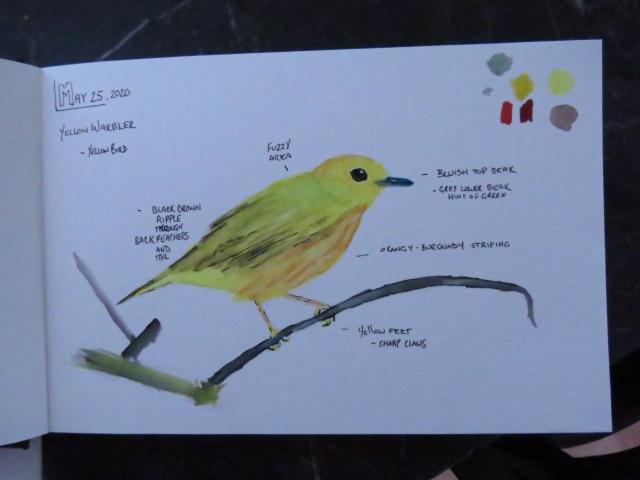
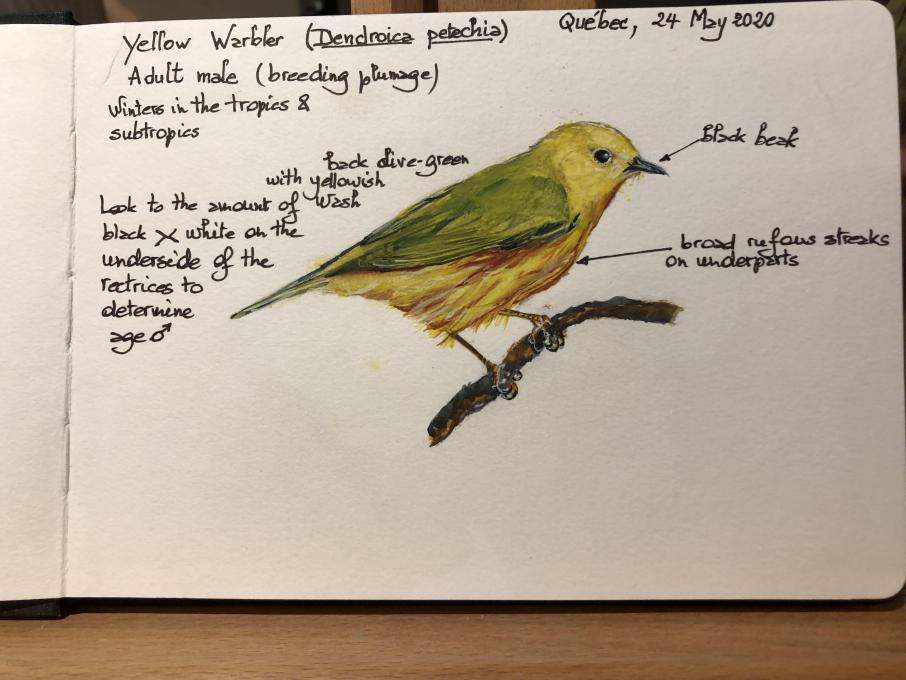

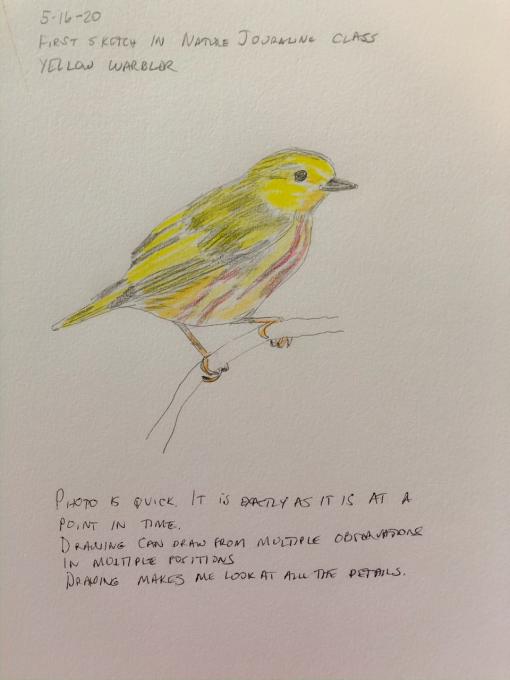
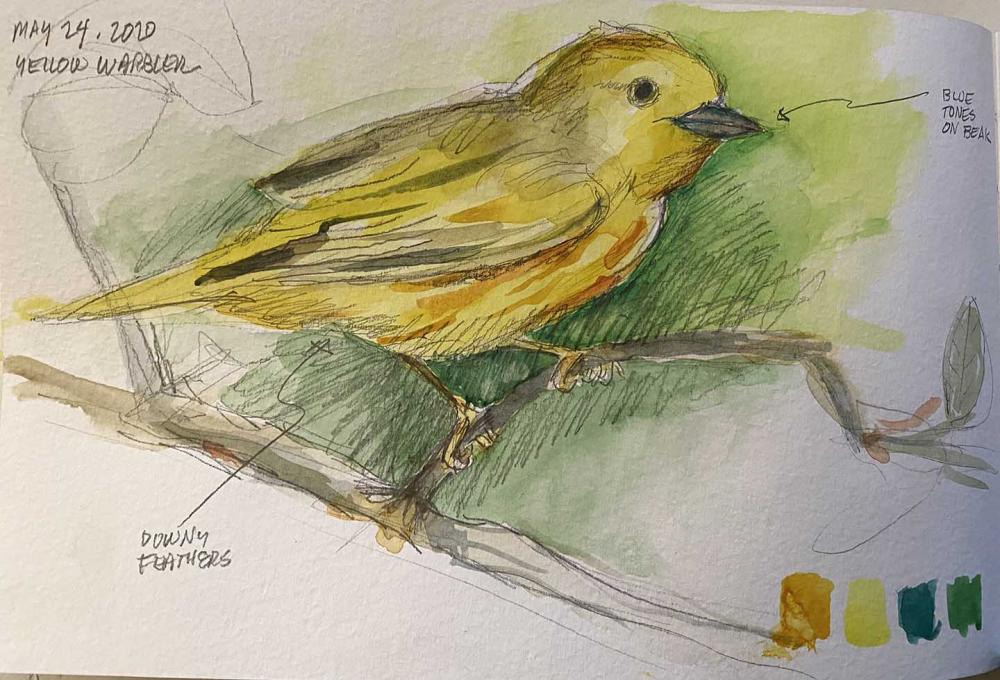
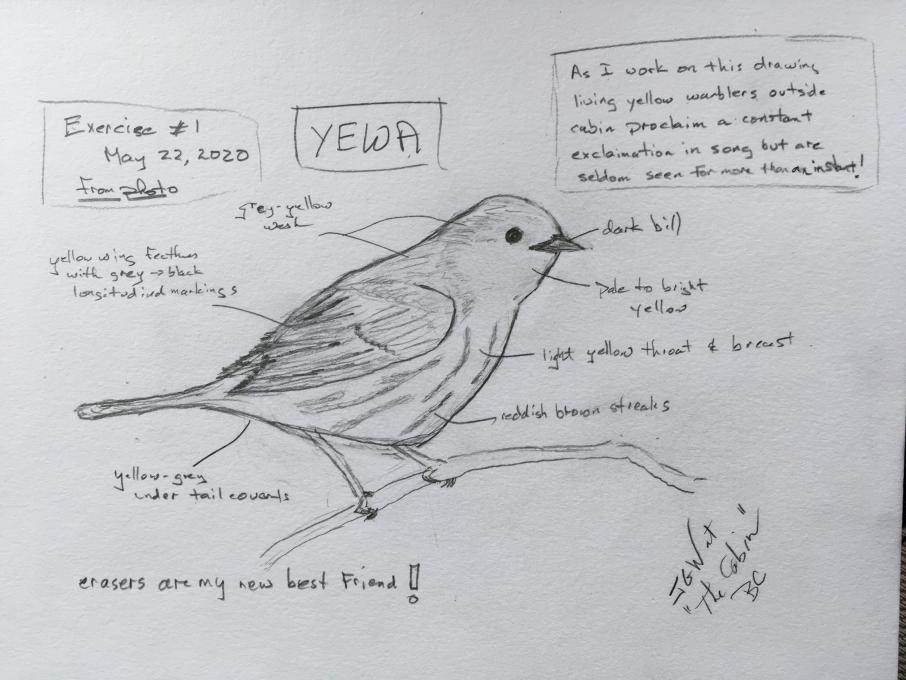
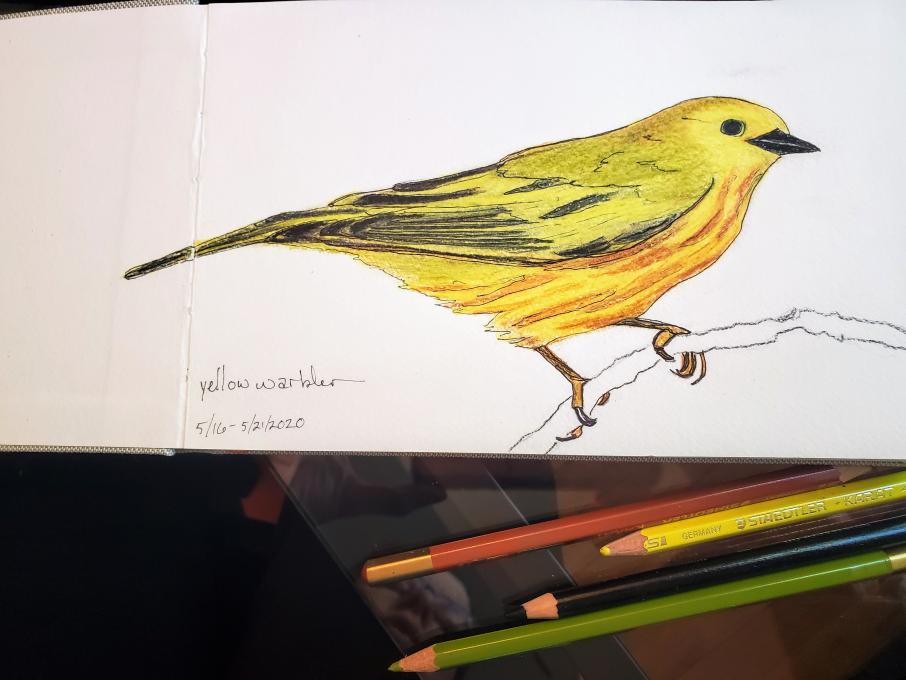


 This was a fun exercise.....and I took my time to try to capture proportion and some detail. It will be fun to compare at the end of the course. The photo was beautiful to work from, plus you have the luxury of time. Drawing live in nature will definitely be more of a challenge (:
This was a fun exercise.....and I took my time to try to capture proportion and some detail. It will be fun to compare at the end of the course. The photo was beautiful to work from, plus you have the luxury of time. Drawing live in nature will definitely be more of a challenge (: 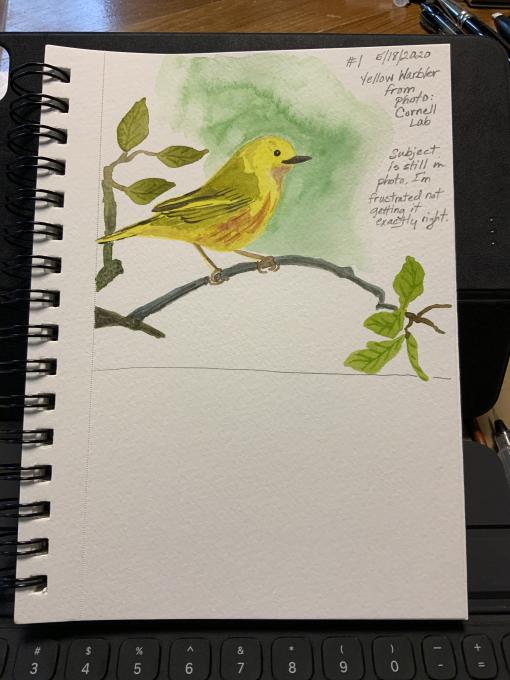
 This turned out much better that I expected! The hardest part was getting started, but once I did it was sketch-erase-sketch-erase-sketch and I enjoyed it. Knowing when to stop is also hard, but since I was working on it while my baby slept, he helped me break away when he woke up. ;)
Working from such a high quality photo was good for studying proportions and detail. I will probably download some more pictures like this from the Mckauly library so practice on days when we can get outside!
This turned out much better that I expected! The hardest part was getting started, but once I did it was sketch-erase-sketch-erase-sketch and I enjoyed it. Knowing when to stop is also hard, but since I was working on it while my baby slept, he helped me break away when he woke up. ;)
Working from such a high quality photo was good for studying proportions and detail. I will probably download some more pictures like this from the Mckauly library so practice on days when we can get outside! 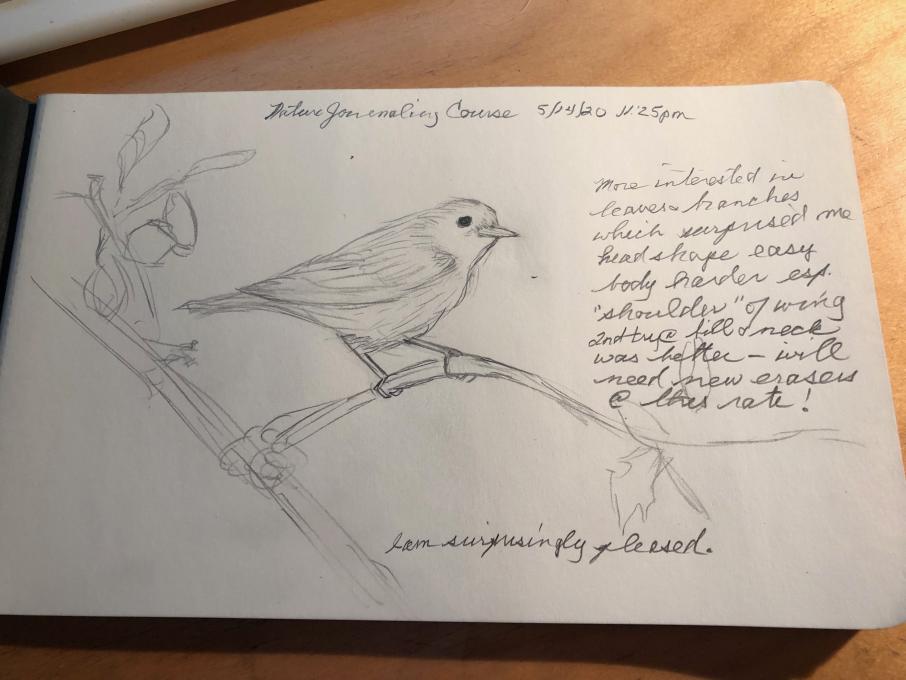 I was surprised and pleased at the end, though I think I went through more eraser than pencil during the process. There's lots more observation when you draw. I think of photographs as a memento -- something captured rather than reproduced.
I was surprised and pleased at the end, though I think I went through more eraser than pencil during the process. There's lots more observation when you draw. I think of photographs as a memento -- something captured rather than reproduced. 

 When I began to draw the warbler, I realized how difficult it was. I thought it would be easy. I didn’t know where to start. Should I start drawing the bird first or branches first? As I began to draw, I started to notice the brownish fine lines on the breast, black on the edge of wings and the posture. As I nature journal, I believe details will make a difference.
When I began to draw the warbler, I realized how difficult it was. I thought it would be easy. I didn’t know where to start. Should I start drawing the bird first or branches first? As I began to draw, I started to notice the brownish fine lines on the breast, black on the edge of wings and the posture. As I nature journal, I believe details will make a difference. 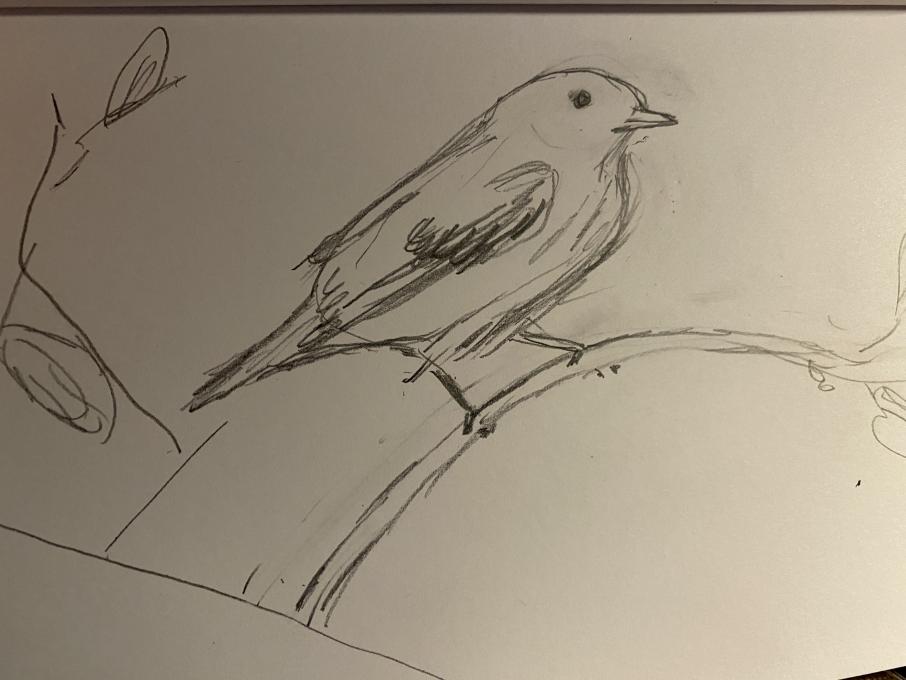 to get an ID.
to get an ID. 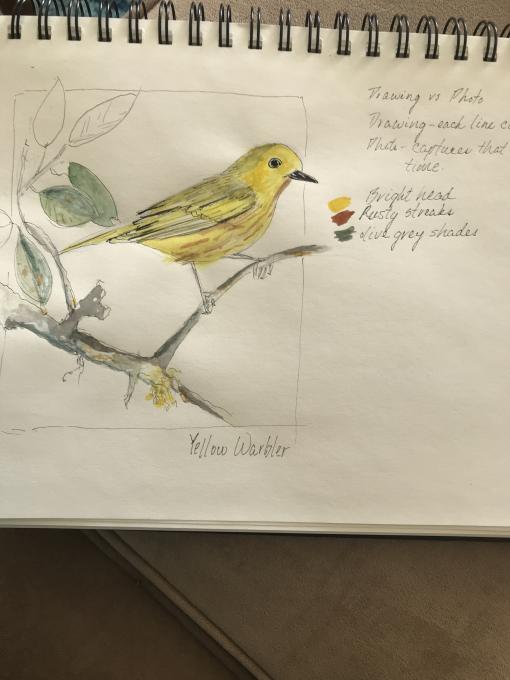 I
I 
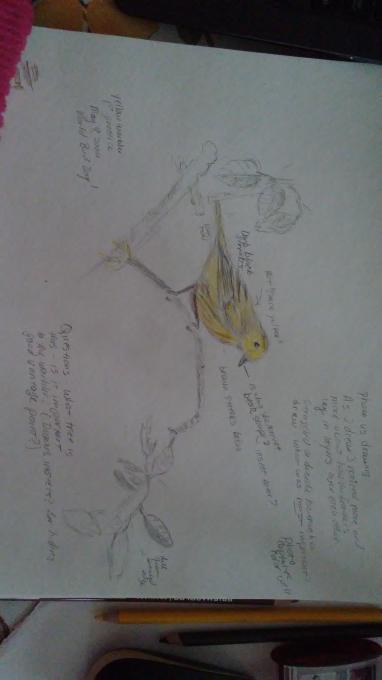
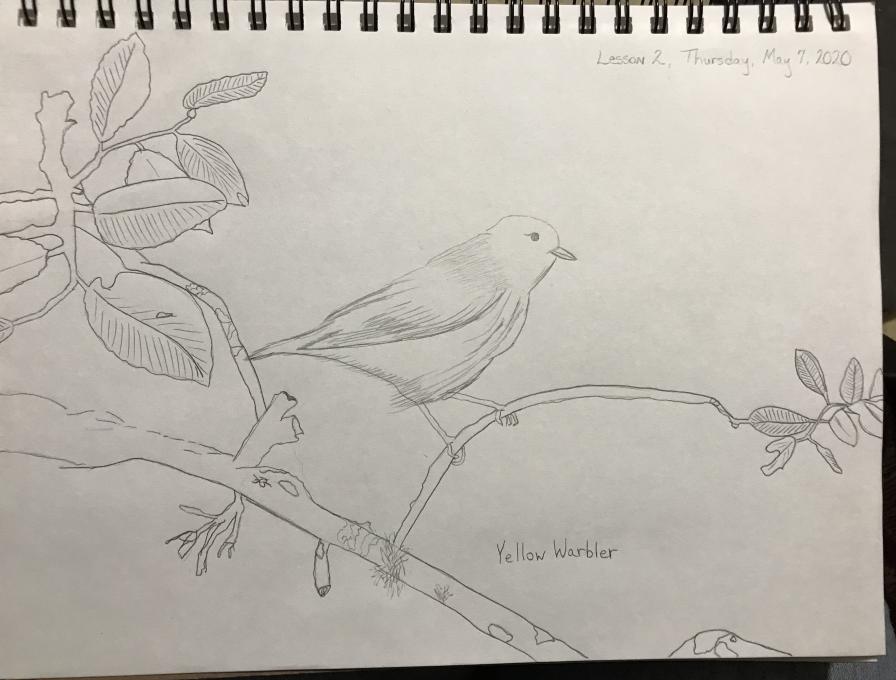 1. I feel much more comfortable drawing from a photo because my subject won’t move & I don’t feel like I have to rush. The drawing layout (composition) is set, I have a reference to look back at, which comes easy. My challenging part is size-perspective & drawing the fine details of feathers and textures, to give a 3-D look instead of the flat 2-D drawing.
2. Maybe the moss & lichen on the branches.
1. I feel much more comfortable drawing from a photo because my subject won’t move & I don’t feel like I have to rush. The drawing layout (composition) is set, I have a reference to look back at, which comes easy. My challenging part is size-perspective & drawing the fine details of feathers and textures, to give a 3-D look instead of the flat 2-D drawing.
2. Maybe the moss & lichen on the branches.  It took a lot of erasing and about 1 1/2 hrs, but I enjoyed the process. I’m just now posting this! Some of you folks are already amazing!
It took a lot of erasing and about 1 1/2 hrs, but I enjoyed the process. I’m just now posting this! Some of you folks are already amazing!